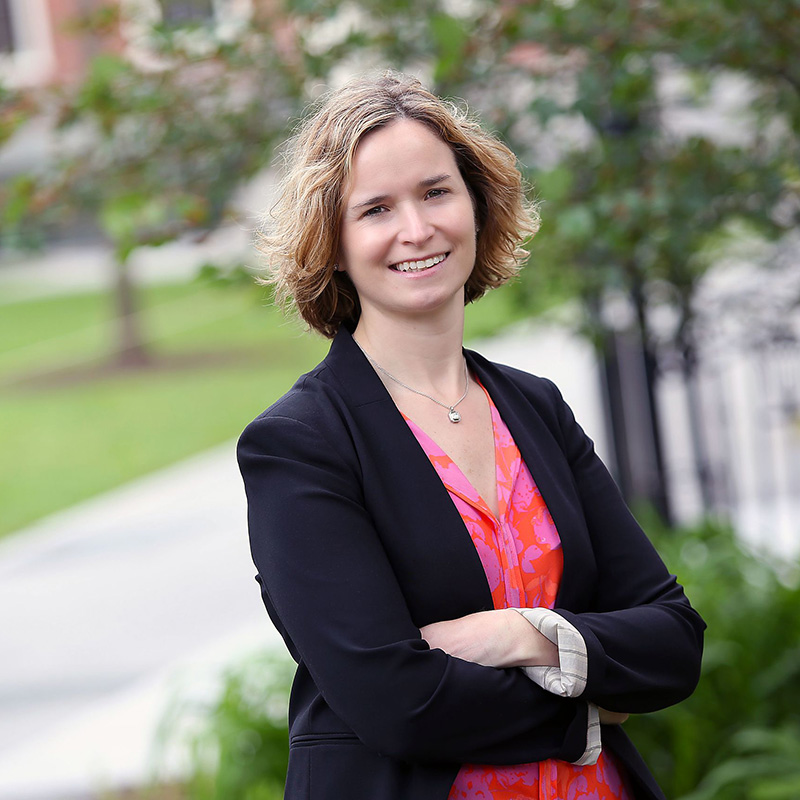Early education advocates cheered when President Biden’s State of the Union address noted that children who attend preschool are nearly 50% more likely to finish high school and go on to earn a two- or four-year degree, no matter their background. Shortly after the speech, Early Learning Nation magazine (ELN) spoke to Nonie K. Lesaux, co-director of the Saul Zaentz Early Education Initiative at the Harvard Graduate School of Education, about seizing this momentum and informing policy through research.
Mark Swartz: A recent story in ELN highlights a study by the Journal of Human Resources that finds preschool programs reserved for poor children aren’t nearly as effective as universal ones. Agree? Would you say this assertion applies to all states and cities?
Nonie K. Lesaux: I’m not sure we can make that kind of widespread assertion one way or the other, given the multitude of ways these programs come about and how hard they are to compare to one another (different resources, populations served, staffing models, etc.). Of course, many states and cities begin with a targeted program because they lack the resources and/or political will to invest in a universal system—and it can also be hard to ramp up and mount a universal system right out of the gates.

It’s important to remember that any expansion in access to safe, affordable child care is better than the alternative. But also, that we’re ultimately aiming for high-quality, universal child care to boost child development and support today’s families. Hopefully, more states and cities will continue to look to a universal, mixed-delivery model as the most viable and cost-effective path to ensuring the well-being of children, families and communities as a whole.
Swartz: ELN has also covered research by NBER in Boston and a study by NIEER in New Jersey on the benefits of public investment in preschool. What further research needs to be done?
Lesaux: Research on the short- and long-term benefits of high-quality early education, including the research you cite, is incredibly important for building the case for more robust investments in the early childhood system. But these studies most often take a very narrow look at a very specific question, for example, examining whether a specific type of program in a specific place (usually public-school pre-K) influences a very specific set of outcomes (e.g., academic achievement in elementary or secondary school, college attendance, etc.).
What is needed—and is emerging through our groundbreaking, statewide Early Learning Study at Harvard (ELS@H) —is a clearer understanding of exactly what works and for whom across all the diverse settings where young children spend their time, including public school pre-K, center-based child care, home-based child care and even family and relative care. For example, here in Massachusetts only about 49% of 3 year-olds and 55% of 4 year-olds are in what would be considered formal programs. And yet our data on the quality of early education and care shows very clearly that setting type is not actually predictive of quality—there are features of quality across all types of settings where children are learning and growing and being cared for, and there is also room to improve across all settings as well. The information we continue to gather through ELS@H will help leaders at all levels of the system, from the classroom to the state house, make informed decisions about how to best invest their limited time, energy and funds.
Swartz: How can early education advocates make the case to policymakers?
Lesaux: Perhaps one of the most important things they can do—or continue to do—is to help policymakers understand that access to high-quality early education is something that benefits all members of a community. It is a social and economic development strategy; it ensures young children have the kinds of rich, responsive interactions and experiences that nurture their developing bodies and brains, and it ensures parents and other family caregivers can work, go to school or participate fully in other aspects of community life. All of this contributes to thriving communities, cities and states. Advocates can and should also continue to point to the fact that early education is one of those exceptionally rare issue areas where public and private investments are both highly impactful and broadly popular across political, age and geographic lines.
Swartz: What are the best strategies you’ve seen to ensure we get quality as well as access?
Lesaux: Research has long demonstrated that young children thrive in early learning environments characterized by warm, responsive and cognitively stimulating interactions. Any effort to improve quality alongside access must focus on nurturing these kinds of interactions—and that means investing in the early educators who shape the environments where young children learn and grow.
Investing in educator compensation and professional learning across all types of settings that serve young children, including public school pre-K, center-based care, family child care and others, is the best strategy we have for simultaneously improving quality and access.
Swartz: What is the Zaentz Initiative doing to promote public investment in preschool?
Lesaux: We’re working on a number of ongoing projects to promote public investment in high-quality, accessible early education. ELS@H is helping us learn more about what works and for whom—which can in turn inform recommendations for strategic, high-impact investments.
The foundational data we’ve collected so far have helped us understand where children spend their time and the need for significant investments across the mixed-delivery system. Our research shows that 80% of three- and four-year-olds in Massachusetts spend time with non-parental caregivers in a range of formal and informal arrangements—and 27% are in unlicensed relative care (e.g., with grandparents), unlicensed non-relative care (e.g., with nannies or neighbors) and family child care.
Despite the critical role these diverse setting types and caregivers play in the lives of families, this diversity is not typically reflected in policy conversations and strategies. And the pandemic only served to exacerbate challenges for the entire workforce and the system of supports for children and families. Many child care providers, including 87% of family child care providers and 35% of community-based centers, reported their income had been significantly reduced, and, not surprisingly, most early educators (60%) shared that the pandemic had affected their mental health.
At the same time, comparing data collected before and during the pandemic, we could see that many children experienced declines in behavioral health (e.g., more aggression and anger) and many families experienced declines in well-being (e.g., declines in parental mental health and increased parent-child conflict). Our most recent data indicate these trends are largely persisting in the two years since the pandemic’s onset, unfortunately.
Swartz: How does the Early Childhood Policy Academy confront these challenging realities?
Lesaux: In partnership with the Hunt Institute, we have supported several cohorts of leaders who share a commitment to improving the lives of young children and their caregivers. The group comprises leaders from across the political spectrum and in a variety of roles, including lieutenant governors, legislators, agency heads, and others. The Policy Academy coursework builds upon the learning design and foundational content in our other Professional Learning Academy programs and is designed to provide policymakers with knowledge, tools and support to increase investments in a stronger early childhood system.
Swartz: What are some lessons from other countries?
Lesaux: Other countries have found ways to invest in child and family well-being as a public good that we can learn from here in the United States. The Scandinavian and Nordic countries, including Sweden, Finland and Denmark, are routinely held up as exemplars in this respect—and for good reason. They have managed to enhance quality while drastically expanding access to free or affordable care. They have done this in part by heavily subsidizing the true cost of high-quality care—including the costs associated with supporting a well-compensated, well-trained early education workforce. This in turn allows them to cap parent fees at much lower levels than we ask from families here in the U.S.
Many other countries offer valuable lessons in everything from funding models (e.g., South Korea) to quality frameworks and approaches to career progression for the early education workforce (e.g., Australia). What they generally have in common is a high level of commitment and coordination starting from the top of the system—plus significant, dedicated and sustained sources of funding. High-quality early education is seen as a right, not a privilege, and these countries’ funding priorities and mechanisms reflect this belief.

Mark Swartz
Mark Swartz writes about efforts to improve early care and education as well as developments in the U.S. care economy. He lives in Maryland.



